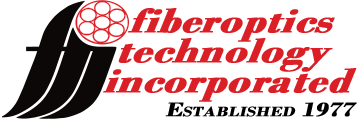As a leading manufacturer of fiber optic components and systems, we’ve worked with many applications over the last 50 years, particularly in the medical industry. Recently, we’ve noticed customers’ increasing attention to packaging requirements. What follows below is typical scenario for a disposable product.
You’ve just completed documenting the commercial requirements for your next medical device. It’s a disposable product, and the plan is to sell it pre-sterilized for off-the-shelf use.
What’s the next step?
Today’s medical device risk management perspective prefers a single-use product and strategy, and the packaging industry has “geared up” to handle it. But many first-time users of packaging/sterilizing services don’t fully understand the time and financial investment required to bring this type of packaged product to market.
To have a successful packaging strategy rollout, break the planning down into components:
- Sterilization type required
- Compliant mechanical packaging materials for the chosen sterilization type
- Package design
- Package design validation and risk assessment
- Sterile barrier packaging equipment selection & installation
- Sterile barrier packaging process validation
- Continued sterile barrier packaging verification activities
Sterilization Type
Sterilization type is governed by the chemical and mechanical limitations of the device components and, in some cases, the device’s final use.
Four types are available: Steam, Etylene Oxide (EO), Gamma and Electron Beam. To determine which method will be optimal for your use, we suggest you contact a sterilization service. Not all sterilization services offer all sterilization methods, but all should know the pro’s and con’s of each type, and should easily direct you to the best method for your device and use. The most common method for typical packaged products is EO, as the gas can penetrate the package barrier, but microbial particulate cannot.
Packaging Materials
Once you know your sterilization process, you can select the packaging material. There are a multitude of material suppliers in the market. A great place to conduct research is the annual PACK EXPO, a trade show bringing all facets of packaging, for all markets, together under one roof. Of course, packaging companies also have good experience and material science resources on staff; you should leverage that knowledge base as well.
For this discussion, a typical barrier cover or pouch is a spun polypropylene material or medical grade paper. Most packaging bodies are vacuum formed trays and containers made from Polycarbonate, polyurethane (TPU), or polyvinyl chloride (PVC).
Typical packaging materials have already undergone testing to assure efficacy, but if you select an exotic material, it must be tested for barrier performance and sterilization compatibility. The material supplier, an independent lab or consulting service can guide you through that process.
The outputs from this step produce material descriptions and validation certification.
Package Design
At this point in the process, the medical product designer coordinates the wishes of the medical device owner, the needs of the product, and the requirements of the package production service to specify needed packaging elements.
Ideally, the package should integrate labeling, ease of device removal, sufficient device protection, packaging process needs, and package storage ease and efficiency.
Once all inputs are considered, the designs are finalized. Materials are produced using (typically) vacuum forming, heat sealing, printing, and die-cutting processes.
The outputs from this step produce package specifications and should comply with best practices under ISO 11607-1
Packaging Material Validation
Packaging component production lead time could be weeks to months, depending on the requirement. If required, tooling is ordered/produced to work with packaging equipment. Tooling, if required, (one tray vacuum tool, one tray sealer fixture) will cost $5-8K each, $10-16K for a set; lead time could be 3-6 months.
Package Validation
While tooling is being made, the packaging material is ordered and produced. Tooling and package material come together in the packaging equipment. Before packages are used to actually “kit” medical device parts, the formed, but empty package must undergo testing to ensure seal integrity. A formal process validation activity is used to ensure that a consistent, stable seal can be constantly produced with existing equipment. Since the selected materials are already validated, this process validation step assures the process of mating the package materials is effective; that a microbial barrier has been formed and is maintained, from initial packaging through specified shipping, sterilization activities, and aging periods.
This assurance is provided by the packager, but the customer should be prepared to support the cost of testing and validation activities. Once the process has been validated, the packager is responsible for making sure the process is under control for future production runs. Unless the packaging material, packaging equipment, or tooling changes, the process and packaging will not require revalidation.
Packaging process validation could cost between $10-$20K and take weeks to months to complete. The packager must run a number of empty packages and submit them to a lab for evaluation and testing.
Because the packaging customer should trust, but verify their vendors compliance, all packaging services for medical devices should submit the following certifications, or validation reports, when asked:
- Clean room type – Class 7 minimum
- Current registration to ISO13485
- Clean room packaging process validation complying with ISO 11607-2
- Cleanroom operational procedures/records in compliance to ISO 14644 -1 through 5
Once the equipment, sealing process, and packaging materials are validated, the packaging service will accept your parts and produce “kits” ready for sterilization. They will ask you to clean and double bag the parts. Avoid the use of any organic material in the inner bag.
Sterilization
The packaging service can prepare the finished and packaged kits for sterilization. Depending on the sterilization type specified, this could mean loading pallets or cartons of a specific size.
Once the materials are sterilized, one final testing step is required, to ensure the sterilization process is effective. Selected counts of packaged “kits” are sent to a lab to measure sterilization effectiveness.
Because EO sterilization is a commonly used method, what follows below is a typical protocol for testing effectiveness:
Determine a unit of shipment and a minimum size for testing:
- Create the study protocol
- Prove biological indicators (BI) are more resistant than product bio-burden (fractional, non-lethal cycle). BIs are placed at the most difficult-to-treat/penetrate places within the actual product.
- 3 Half Cycles – sterilization procedures to assure SAL (sterility assurance level of 10-6)
- 3 Full Cycles – tests for residuals
- Add in minimum load validation to allow for flexibility in load configuration, i.e. one box through one pallet of product
- Results analyzed and validation report generated
Overall, effectiveness assurance lead time is 12-14 weeks (minimum of 10 samples from 3 different lots for bioburden testing). Costs are $16-20K for the validation setup and cycling, $5K for lab work associated with validation.
Summary
All costs stated here reflect estimates for NRE work; they exclude the actual costs of packaging and sterilization. Those costs are subject to differences in packaging/sterilization method, and volume.
Total costs for a new product should be budgeted between $50-65K, and take as long as a year to bring to market.
At a minimum, you’ll find yourself working with a:
- Packager
- Material supplier
- Lab
- Sterilizer
Some, or all, of these services can be consolidated by working through a vendor willing to coordinate a packaging program. The ideal circumstance would be working with a medical device manufacturer who also offers packaging services.

